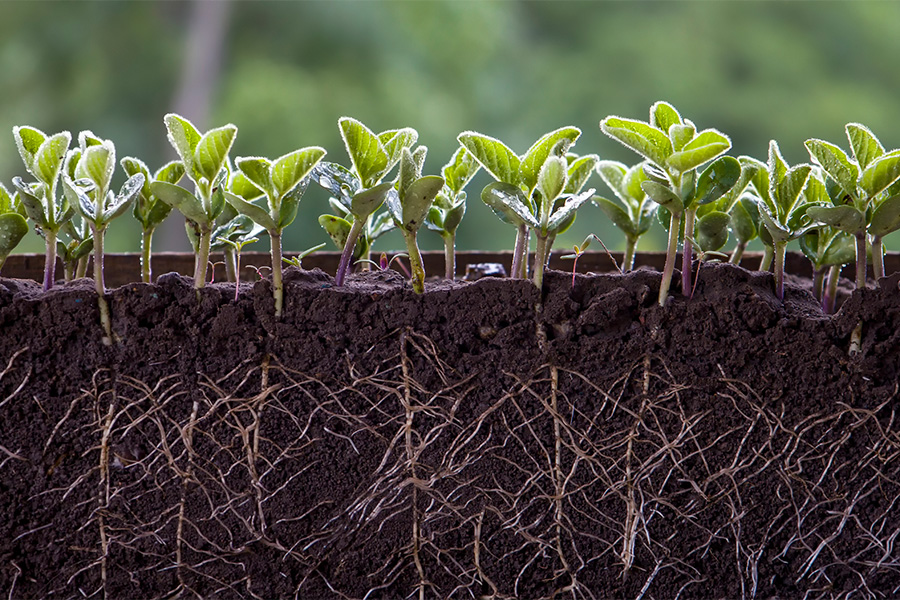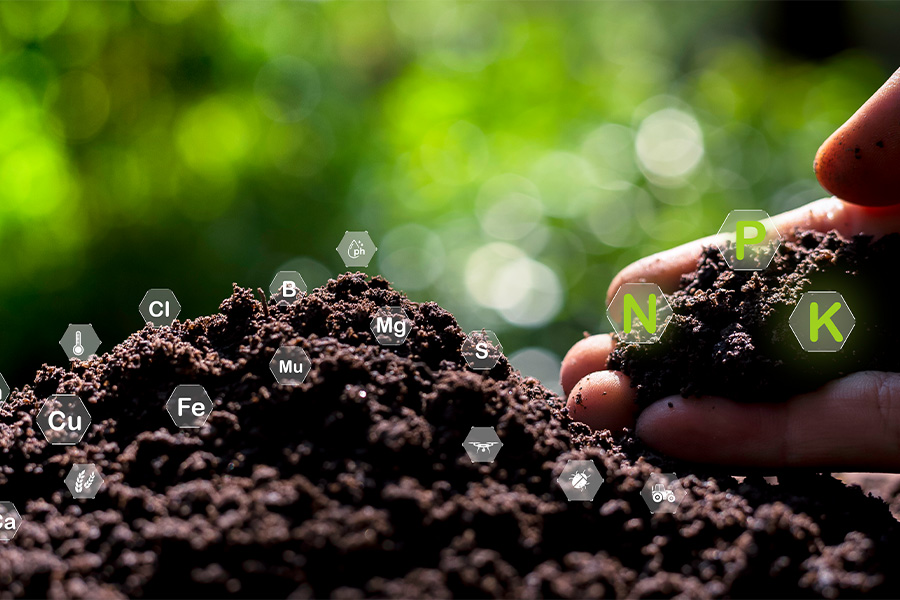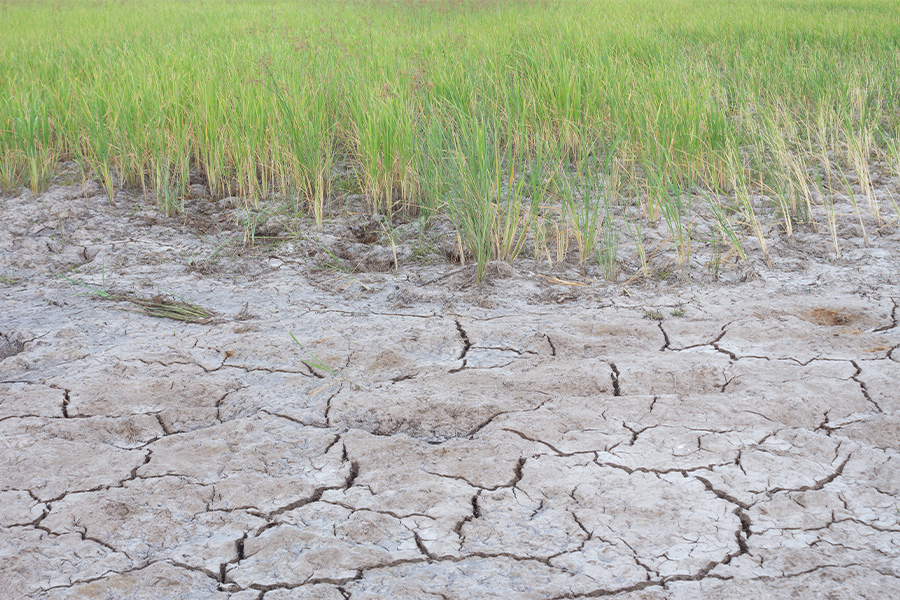Commercial Soil
-

This handbook is designed to serve as a reference guide for the University of Georgia Cooperative Extension personnel and others regarding Georgia’s lime and fertilizer recommendations and to provide basic information pertinent to the soil testing program.
David E. Kissel Ph.D and Leticia S Sonon
|
-

C 990
Soil Inoculants
Soil inoculants are used for a variety of reasons. In some cases, we add soil organisms that have a known beneficial effect. A symbiotic relationship is one that is mutually beneficial. In return for the plant feeding the rhizobia carbon from photosynthesis and giving it a home, the bacteria can “fix” atmospheric nitrogen into a form that the plant can use.
Julia W. Gaskin, Peter Gary Hartel, Elizabeth L. Little, and Glendon H. Harris
|
-

Many farmers and gardeners use natural minerals and organic fertilizers rather than synthetic ones to build their soil. If you use organic materials as all or part of your fertilization program, this publication will help you calculate the proper amount to use from the recommendations provided by a soil test.
Walter F. Reeves, Julia W. Gaskin, David E. Kissel Ph.D, George E. Boyhan, Wayne J. McLaurin, and Glendon H. Harris
|
-

This publication primarily focuses on rear discharge, twin spinner spreaders common for poultry litter application in the southeast.
Casey W. Ritz
|
-

C 1077
Cover Crop Biomass Sampling
Cover crops are one of the most important practices that farmers can use to improve their soils and the sustainability of their production system. Knowing how much biomass there is in a field is a critical piece of information for cover crop management. Part 1 of this circular provides a step-by-step guide to taking a sample that will be representative of your field. Part 2 provides additional steps for preparing a fresh cover crop sample to send to the Agricultural and Environmental Services Laboratory so it can be analyzed to determine nitrogen availability to the following crop. Equation examples and data sheets are also provided in order to help users calculate necessary information for submission using the given formulas.
Julia W. Gaskin, Dennis Hancock, and Uttam K. Saha
|
-

Cation exchange capacity (CEC) is a measure of the total negative charges within the soil that adsorb plant nutrient cations such as calcium (Ca2+), magnesium (Mg2+) and potassium (K+). As such, the CEC is a property of a soil that describes its capacity to supply nutrient cations to the soil solution for plant uptake.
Uttam K. Saha
|
-

The University of Georgia Agricultural and Environmental Services Laboratories offer soil salinity testing to help farmers and the general public diagnose and manage problems associated with soil salinity. By definition, a saline soil contains excess soluble salts that reduce the growth of most crops or ornamental plants. This publication discusses soil salinity testing, data interpretation and recommendations, specifically those pertaining to the University of Georgia.
David E. Kissel Ph.D, Uttam K. Saha, and Leticia S Sonon
|
-

Georgia possesses diverse soil conditions and many forage production factors are influenced by this diversity. As a result, the soil environment of a given site must be considered when selecting forage species, determining fertilization strategies and planning forage utilization systems. This article guides forage producers through the process of exploring their soil’s characteristics and sampling the soil in pastures and hayfields for testing, and provides information about specific nutrients and soil amendments relative to forage production practices. Recommendations are also made on how to minimize the economic and environmental risks associated with the addition of nutrients to pasture and hayfields.
Steve Morgan, Dennis Hancock, Randy W. Franks, Wade Green, and Glendon H. Harris
|
-

While site-specific soil sampling can improve field management, it must be accompanied by the conscientious collection and analysis of data. The new technologies that have elevated precision agriculture into the forefront of farm management cannot offset poor data collection and soil-testing techniques. Inaccurate data on soil properties will inevitably lead to improper management decisions.
This bulletin addresses three primary factors that can affect the precision management of soil fertility: 1) collecting proper soil-sample cores and the consequences of improper soil sampling, 2) breaking the field into smaller management areas, and 3) differences in test results and recommended application rates between soil-test laboratories. A step-by-step procedure is then presented on how to use variabl e yield goals to develop field maps showing variable application rates o f fertilizers and lime.
Glen C. Rains, Calvin D. Perry, and Wesley Porter
|